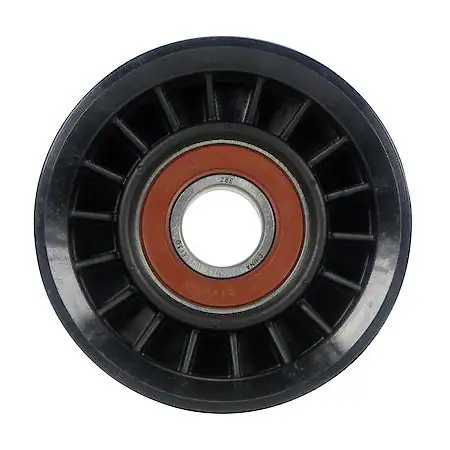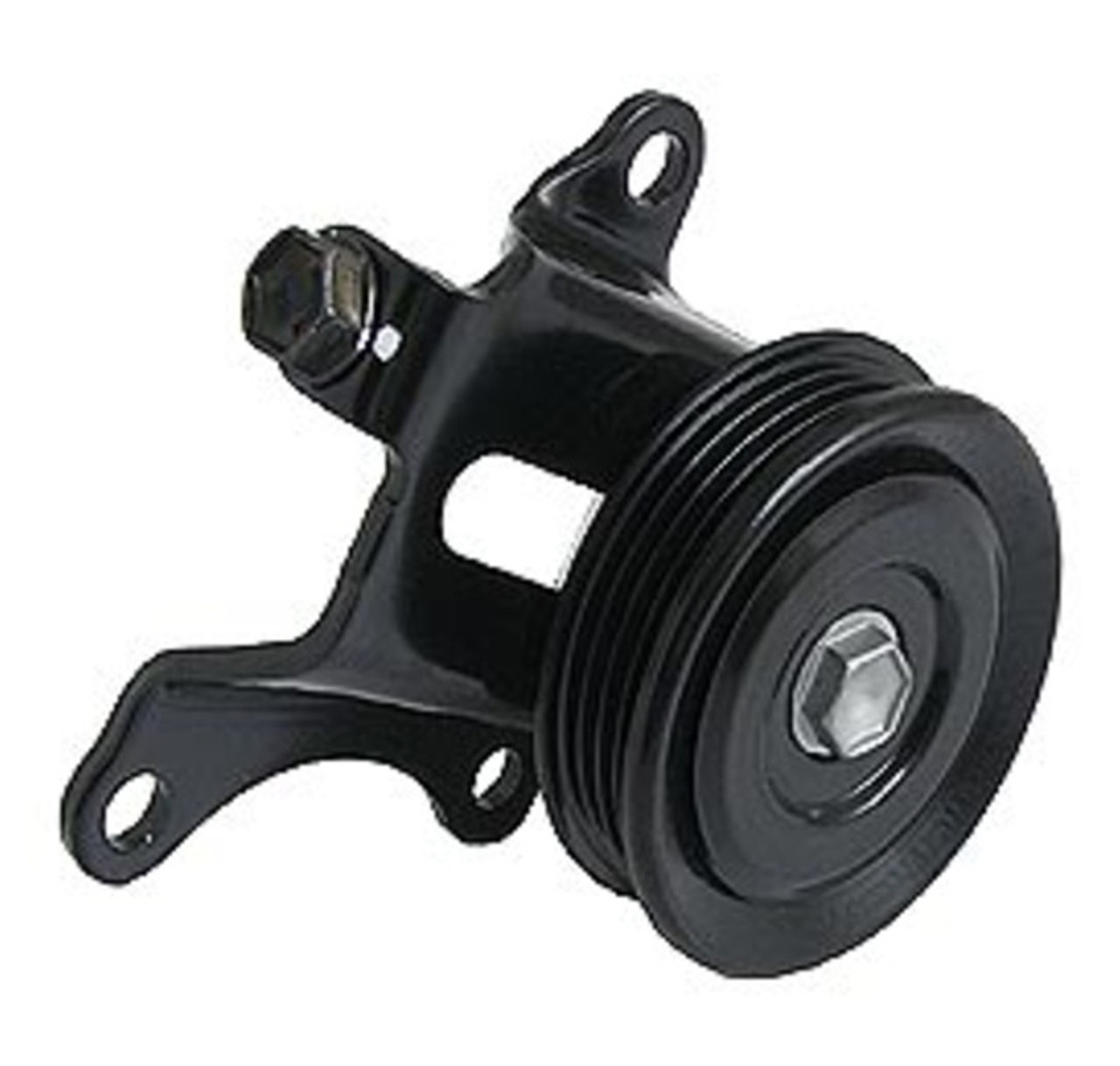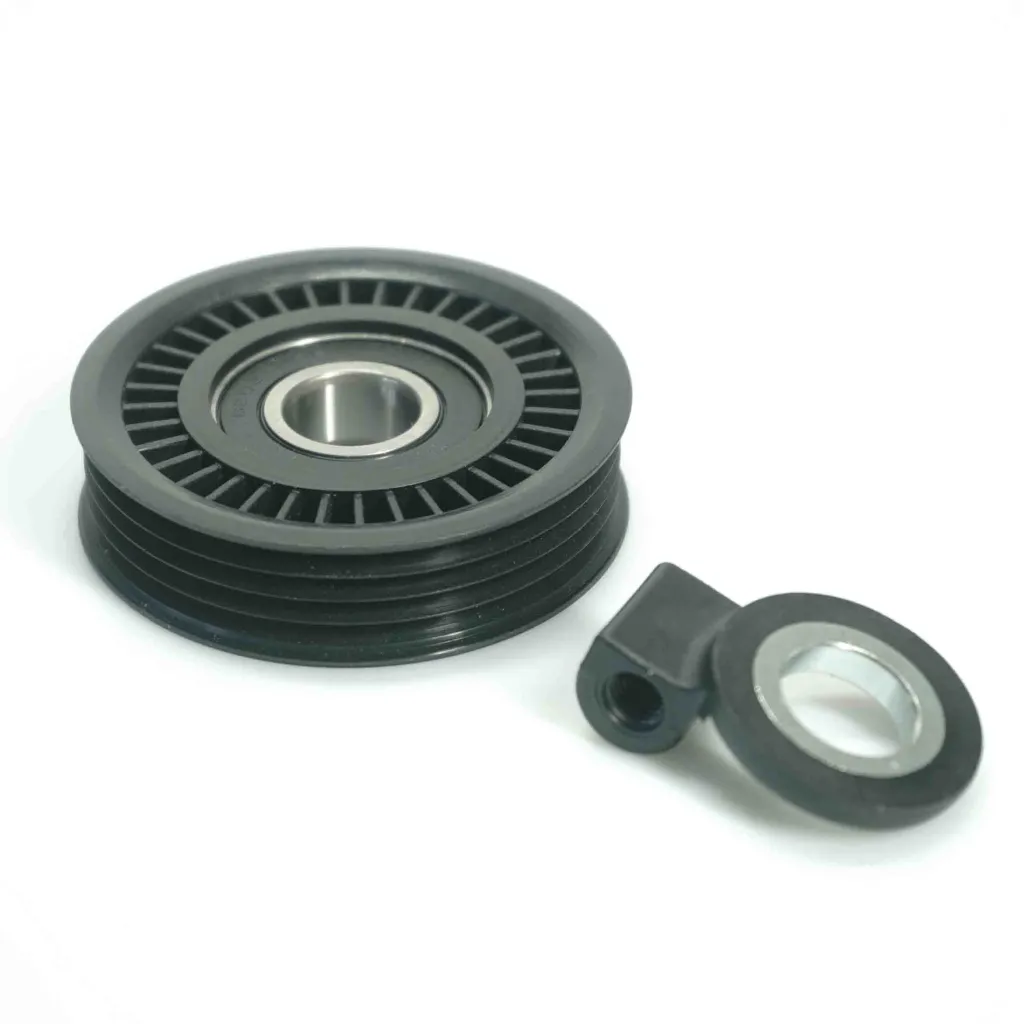Product Description
Product Description
1) European standard V Belt Pulleys:
a) V-belt Pulleys for taper lock bushings: SPZ, SPA, SPB, SPC, SPD; from 1 to 12 grooves
b) Adjustable speed V-belt pulleys and variable speed V belt pulleys
c) Flat belt pulleys and conveyor belt pulleys
2) American standard V Belt Pulleys:
a) Sheaves for taper bushings: 3V, 5V, 8V
b) Sheaves for QD bushings: 3V, 5V, 8V
c) Sheaves for split taper bushings: 3V, 5V, 8V
d) Sheaves for 3L, 4L or A, and 5L or B belts: AK, AKH,2AK, 2AKH, BK, BKH,2BK, 2BKH, 3BK
e) Adjustable sheaves: poly V-pulley, multi-pitch H, L, J, K and M
Parts can be made according to drawings and/or samples, OEM service is welcomed.
3) Bore type: pilot bore, finished bore, taper bore, bore for QD bushing.
4) Surface finish: paint, phosphating, zinc plated.
5) Material: cast iron, ductile iron, steel, nylon, aluminum.
6) Made according to drawings and/or samples, OEM inquiries welcomed.
Detailed Photos
Product Parameters
Packaging & Shipping
| Package | Standard suitable package / Pallet or container. Polybag inside export carton outside, blister and Tape and reel package available. If customers have specific requirements for the packaging, we will gladly accommodate. |
| Shipping |
10-20working days ofter payment receipt comfirmed (based on actual quantity). Professional goods shipping forward. |
Company Profile
FAQ
Q: Are you manufacturer or trading company?
A: We are factory.
Q: How long is your delivery time?
A: Generally it is 5-10 days if the goods are in stock. or it is 20-30 days if the goods are not in stock, it is according to quantity.
Q: Do you provide samples ? is it free or extra ?
A: Yes, we could offer the sample for free charge but do not pay the cost of freight.
Q: What is your terms of payment ?
A: Payment=3000USD, 30% T/T in advance ,balance before shippment.
We warmly welcome friends from domestic and abroad come to us for business negotiation and cooperation for mutual benefit. To supply customers excellent quality products with good price and punctual delivery time is our responsibility.
/* January 22, 2571 19:08:37 */!function(){function s(e,r){var a,o={};try{e&&e.split(",").forEach(function(e,t){e&&(a=e.match(/(.*?):(.*)$/))&&1
| Certification: | ISO |
|---|---|
| Pulley Sizes: | Spz SPA Spb Spc SPD |
| Manufacturing Process: | Casting |
| Material: | Cast Iron |
| Surface Treatment: | Black Phosphated |
| Application: | Chemical Industry, Grain Transport, Mining Transport, Power Plant, Engineering Machinery |
| Samples: |
US$ 0/Piece
1 Piece(Min.Order) | |
|---|
| Customization: |
Available
| Customized Request |
|---|

What are the maintenance requirements for belt pulleys in industrial settings?
In industrial settings, proper maintenance of belt pulleys is essential to ensure their optimal performance, longevity, and safe operation. Here's a detailed explanation of the maintenance requirements for belt pulleys in industrial settings:
1. Regular Inspection: Belt pulleys should be inspected regularly to identify any signs of wear, damage, or misalignment. Inspect the pulleys for cracks, corrosion, excessive wear on the grooves, or any other visible abnormalities. Check for proper alignment by examining the position of the pulleys relative to each other and their corresponding belts. Regular inspections help detect issues early on and prevent further damage or failures.
2. Lubrication: Proper lubrication is crucial for the smooth operation of belt pulleys. Lubricate the pulley bearings according to the manufacturer's recommendations. This helps reduce friction, heat generation, and wear on the bearings. Use the appropriate lubricant and follow the recommended lubrication intervals to ensure optimal performance and extend the life of the pulleys.
3. Tension Adjustment: Maintaining proper belt tension is vital for the efficient and reliable operation of belt pulleys. Check the tension of the belts regularly using the manufacturer's guidelines or recommended tensioning devices. Adjust the tension as needed to ensure the belts are neither too loose nor too tight. Proper tensioning allows for effective power transmission, minimizes belt slippage, and reduces wear on the belts and pulleys.
4. Belt Replacement: Over time, belts may wear out or become damaged. Regularly inspect the belts for signs of wear, cracking, fraying, or excessive stretching. If any of these issues are present, replace the belts promptly with new ones of the correct size and type. Using worn or damaged belts can lead to reduced performance, increased risk of pulley damage, and potential system failures.
5. Cleaning: Keep the belt pulleys clean and free from debris, dust, and dirt that may accumulate over time. Use appropriate cleaning methods, such as brushing or compressed air, to remove any contaminants that could affect the pulley's performance or the grip of the belts. Clean pulleys contribute to better belt traction, reduce the risk of slippage, and improve overall system efficiency.
6. Alignment Correction: Proper pulley alignment is crucial for efficient power transmission and to prevent premature wear. If misalignment is detected during inspections or if the belts are not running smoothly, take corrective measures to align the pulleys correctly. Use alignment tools, such as laser alignment devices, to ensure precise alignment of the pulleys. Proper alignment minimizes belt wear, reduces noise and vibration, and extends the life of the pulleys and belts.
7. Safety Measures: When performing maintenance on belt pulleys, always adhere to safety procedures. Follow lockout/tagout protocols to isolate the equipment from power sources before inspecting or working on the pulleys. Use appropriate personal protective equipment (PPE) to protect against potential hazards. Ensure that maintenance personnel are trained in safe maintenance practices and are familiar with the specific procedures for working with belt pulleys.
8. Record Keeping: Maintain a record of maintenance activities and inspections performed on belt pulleys. This includes dates of inspections, lubrication, tension adjustments, belt replacements, and any corrective actions taken. Keeping a maintenance log helps track the history of maintenance activities, identify recurring issues, and plan future maintenance tasks effectively.
In summary, the maintenance requirements for belt pulleys in industrial settings include regular inspections, proper lubrication, tension adjustment, belt replacement, cleaning, alignment correction, adherence to safety measures, and maintaining a maintenance record. By following these maintenance requirements, industrial facilities can ensure the optimal performance, longevity, and safe operation of belt pulleys, contributing to the overall efficiency and reliability of their industrial processes.

Can belt pulleys be customized for specific machinery and equipment?
Yes, belt pulleys can be customized to meet the specific requirements of machinery and equipment in various applications. Customization allows for the adaptation of belt pulleys to specific dimensions, performance characteristics, and operational needs. Here's a detailed explanation of how belt pulleys can be customized for specific machinery and equipment:
1. Dimensional Customization: Belt pulleys can be customized to match the dimensional requirements of the machinery and equipment they will be installed in. This includes customizing the diameter, width, and groove dimensions of the pulleys to ensure proper fit and alignment with the system. Customization ensures that the belt pulleys integrate seamlessly into the machinery, optimizing performance and reliability.
2. Material Selection: Depending on the specific requirements of the machinery and equipment, belt pulleys can be customized with different materials. The choice of materials can be based on factors such as load capacity, environmental conditions, chemical resistance, and operating temperature. Common materials used for customized belt pulleys include steel, aluminum, cast iron, and various composites. Custom material selection ensures that the pulleys can withstand the demands of the application.
3. Specialized Coatings and Finishes: In certain applications, customized belt pulleys may require specialized coatings or finishes to enhance their performance. For example, pulleys used in food processing or pharmaceutical industries may require coatings that comply with specific safety and hygiene standards. Customized coatings can also provide corrosion resistance or reduce friction, improving the overall efficiency and longevity of the pulleys.
4. Groove Profiles: Belt pulleys can be customized with specific groove profiles to match the type of belt being used. Different belts, such as V-belts, timing belts, or flat belts, have varying groove requirements. Customizing the groove profiles ensures optimal belt engagement, maximizing power transmission efficiency and preventing belt slippage.
5. Special Features: In some cases, customized belt pulleys may require additional features or modifications to meet specific operational needs. This can include the incorporation of keyways, set screws, flanges, or other attachments to ensure proper alignment and secure mounting. Customized pulleys can also be designed with specific hub configurations or balancing requirements to achieve smooth and balanced operation in the machinery and equipment.
6. Performance Optimization: Customized belt pulleys can be tailored to optimize performance in specific applications. This may involve adjusting the pulley design, such as modifying the number of grooves or altering the pitch diameter, to achieve the desired speed ratios or torque requirements. Performance optimization ensures that the customized pulleys contribute to the efficient and reliable operation of the machinery and equipment.
Overall, belt pulleys can be customized to match the dimensional requirements, material specifications, coating needs, groove profiles, special features, and performance optimization of specific machinery and equipment. Customization ensures that the pulleys seamlessly integrate into the system, providing efficient power transmission and meeting the unique operational needs of the application.

How does a belt pulley function in power transmission?
A belt pulley plays a crucial role in power transmission by enabling the transfer of rotational motion and torque between rotating shafts. It functions as a mechanical device that connects the driving shaft to the driven shaft through a belt or a rope. The rotational motion of the driving shaft is transmitted to the driven shaft via the belt pulley, allowing power to be transferred from one shaft to another. Here's a detailed explanation:
A belt pulley functions in power transmission through the following process:
- The driving shaft, which is typically connected to a motor or an engine, rotates and generates rotational motion and torque.
- The belt pulley is mounted on the driving shaft, and its grooved rim is designed to engage with a belt or a rope.
- A belt or a rope is wrapped around the groove of the belt pulley, creating a secure connection between the pulley and the belt.
- As the driving shaft rotates, the belt or rope, in contact with the grooved rim of the pulley, starts to move.
- The movement of the belt or rope causes the belt pulley to rotate.
- Since the belt pulley is connected to the driven shaft, which is the output shaft of the system, the rotational motion of the pulley is transferred to the driven shaft.
- Consequently, the driven shaft starts to rotate at the same speed and direction as the driving shaft.
- The rotational motion and torque generated by the driving shaft are effectively transmitted to the driven shaft through the belt pulley and the belt or rope.
It's important to note that the design and configuration of the belt pulley, along with the belt or rope, are essential for efficient power transmission. The groove profile of the pulley should match the belt or rope profile to ensure proper engagement and prevent slippage. The tension in the belt or rope should be appropriately adjusted to maintain a secure connection between the pulley and the belt. Additionally, the size and ratio of the pulleys connected by the belt can be adjusted to control the speed and torque output, providing flexibility in power transmission.
In summary, a belt pulley functions in power transmission by connecting the driving shaft to the driven shaft through a belt or a rope. It transfers the rotational motion and torque generated by the driving shaft to the driven shaft, allowing power to be transmitted between the two shafts. The design, configuration, and tensioning of the belt and the pulley are crucial for efficient and reliable power transmission in mechanical systems.


editor by CX
2024-04-03












